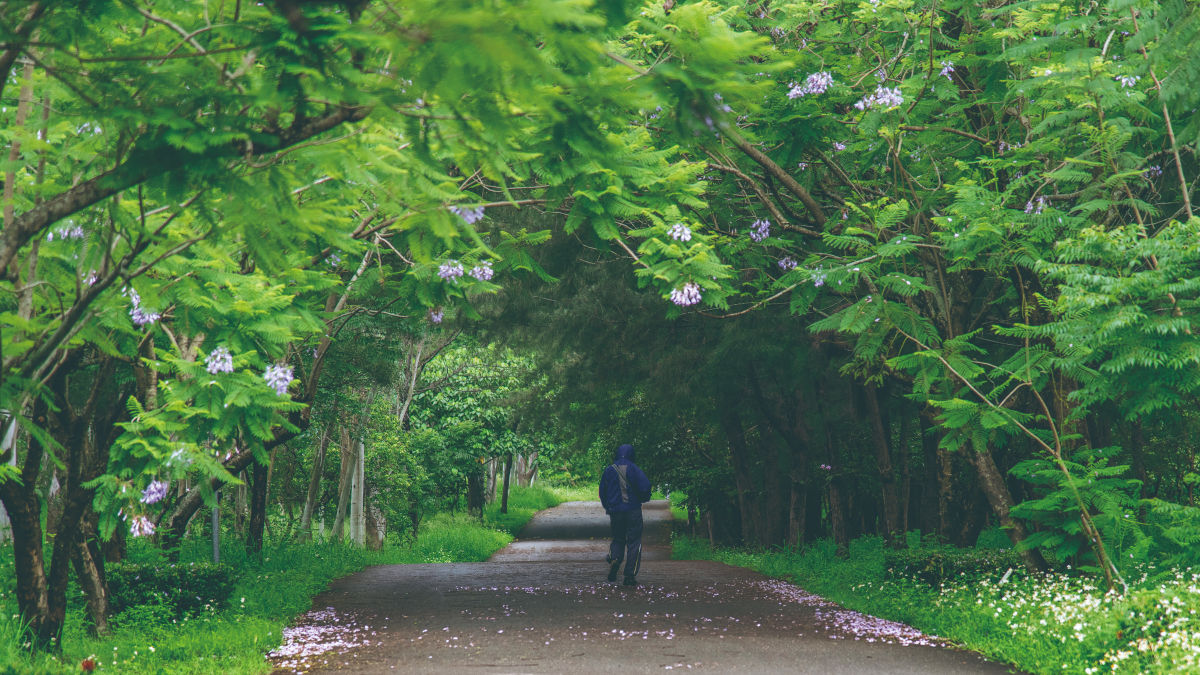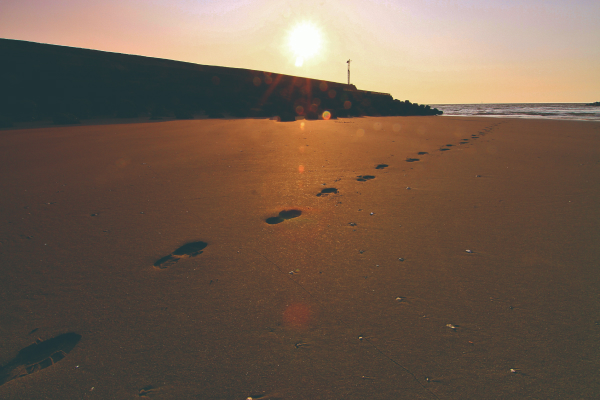Special Topics
The Buddha's demonstration of his final journey

In fact, over 2,500 years ago, the Buddha provided his followers with a model example of how to "prepare for the end of life" before he entered nirvana. These related teachings were compiled in the "Long Discourses - Sutra of the Account of Travels" (equivalent to the Mahayana Mahaparinirvana Sutra in Theravada Buddhism) as well as the "Sutra on the Buddha's Bequeathed Teachings."
In the last year of his life, the Buddha embarked on a journey starting from Vulture Peak in Rajgiri, passing through places like Bamboo Grove, Pāṭaliputra, and crossing the Ganges River to the Bamboo Village outside of Vesali. There, at the Incense Stupa, he announced that he would enter Parinirvana in three months. On his way, the Buddha passed through Bhoganagara, and finally arrived at the place where he entered Parinirvana: the Sala Garden in the city of Kushinagar. Wherever the Buddha went, he always exhorted his disciples to diligently practice the Three Non-Outflow Studies of precepts, samadhi, and wisdom to eliminate greed, hatred, and ignorance, and emphasized the importance of practicing the Four Foundations of Mindfulness, cultivating the Seven Factors of Awakening, and realizing the Four Noble Truths. He also gathered his disciples, instructing them to ensure the longevity of the true Dharma as well as the flourishing and harmony of the Sangha.
Despite his increasingly frail physical condition, the Buddha still earnestly preached the "four great teachings"*, teaching his disciples the wisdom of hearing the Dharma. The Buddha pointed out that these teachings of four sources need not necessarily be spoken by himself, as long as they are in accordance with the sutras and vinaya (code of monastic disciplinary rules). Upon repeated requests from Ananda, the Buddha provided instructions on his after-death arrangements in order to ensure that the Buddha's disciples who had not yet attained liberation could contemplate and remember the Buddha's teachings after he entered Parinirvana. The Buddha asked that his body be cremated in accordance with the royal funeral customs of Chakravartin and allowed his disciples to construct a stupa enshrining his relics, thereby serving as a means for future generations to remember his virtues and teachings. All the Buddha's arrangements provided practice guidance for future Buddhist disciples to follow, thereby attaining benefits from the Dharma as well as allowing the true Dharma to be transmitted to the present day.
Seize the present moment to practice Buddhism
When we understand through Buddhism that birth, aging, illness, and death are natural phenomena of life, we can in turn look at life and death from a broader perspective, and learn to constantly reflect on whether we are truly practicing the teachings of the Buddha and taking the Buddhas and Bodhisattvas as our role models, thereby striving to make the most of this current life and dedicate ourselves to the benefit of all sentient beings. If we live our lives in this way, then every step of our life journey can be grounded and joyful.
Venerable Guo Shing, a member of the Dharma Drum Mountain Sangha who has been diagnosed with malignant brain tumors, felt like he received a new lease on life after his first surgery eight years ago. As a result, he made a vow to make good use of this current life and contribute what he had learned with Venerable Sheng Yen for the benefit of sentient beings. Even though he is uncertain about how much time is left for him, he still lists what he can do on an annual basis, arranging them in order of importance and striving to fulfill them one by one.
Over the past eight years, Venerable Guo Shing has aimed to share his experiences of Chan and the Bodhisattva precepts as well as meaning of the Buddhist doctrine. He not only taught Chan at Dharma Drum Sangha University and Dharma Drum Institute of Liberal Arts, but also worked on editing and publishing important works of Venerable Ling Yuan. He even earned a master's degree and presented numerous research papers. Venerable Guo Shing believes that, as long as one seizes the present moment and moves forward in the direction guided by their aspiration, the future life is just the next journey on the Bodhisattva path. Therefore, there is no need to worry.
Planning for Life and Death with a Vision
"When approaching the end of life, may I personally know the time of arrival, may my body be without suffering from sickness, may my mind be without attachment". The former president of Dharma Drum Institute of Liberal Arts Ven. Hui Min believes that, these phrases from Tzu-yun Chan Master's Pure Land Text, written by the Tzu-yun Repentance Master Zunshi Zhibai in the Song Dynasty, can serve as a blueprint for the end-of-life planning for Buddhists.
 How do we practice such an ideal? Ven. Hui Min encourages us to frequently chant the Buddha's name as well as have the right views and maintain right mindfulness to keep our bodily, verbal and mental actions (the three karmas of body, speech, and mind) pure. When we wholeheartedly focus on chanting the Buddha's name at all times, we can reach the point whereby we'll know the time of arrival when approaching the end of life. Furthermore, Ven. Hui Ming made a vow to develop a habit of exercise to maintain physical and mental health in old age, hoping that he could be free from suffering of illness in order to continue to help others even on the day before his passing. Additionally, due to a lifetime dedication to benefiting sentient beings, our heart is free of regrets; thus, at the time of passing, our mind will be without attachment. At the same time, we also accumulate the provisions of "extensively delivering sentient beings and fulfilling the Bodhi vow."
How do we practice such an ideal? Ven. Hui Min encourages us to frequently chant the Buddha's name as well as have the right views and maintain right mindfulness to keep our bodily, verbal and mental actions (the three karmas of body, speech, and mind) pure. When we wholeheartedly focus on chanting the Buddha's name at all times, we can reach the point whereby we'll know the time of arrival when approaching the end of life. Furthermore, Ven. Hui Ming made a vow to develop a habit of exercise to maintain physical and mental health in old age, hoping that he could be free from suffering of illness in order to continue to help others even on the day before his passing. Additionally, due to a lifetime dedication to benefiting sentient beings, our heart is free of regrets; thus, at the time of passing, our mind will be without attachment. At the same time, we also accumulate the provisions of "extensively delivering sentient beings and fulfilling the Bodhi vow."Bodhisattva practitioners who have generated the Bodhi mind view life not just limited to this current one, but future lives to come. This is why Venerable Master Sheng Yen said: "I vow to carry on in my future lives what I was unable to accomplish in this lifetime". From this moment onward, we should constantly remind ourselves that impermanence strikes quickly and the death can come anytime, and make good use this life for the benefit of ourselves and others, thereby preparing well for death. In doing so, death will not be a dreaded endpoint in life, but more so a motivating force to urge us to diligently practice hard.
Related articles:
Making a Will in Advance and Facing Death Head-On
The Buddha's demonstration of his final journey
The Buddha Teaches You to Say Goodbye Properly
Contemplating death with a remembrance of impermanence
Remaining Steadfast in the Face of Aging, Illness and Death
Resource: Issue 417 of Humanity Magazine, Dharma Drum Publishing Corporation
Translation: 可馨
Editing: Keith Brown, YKL
